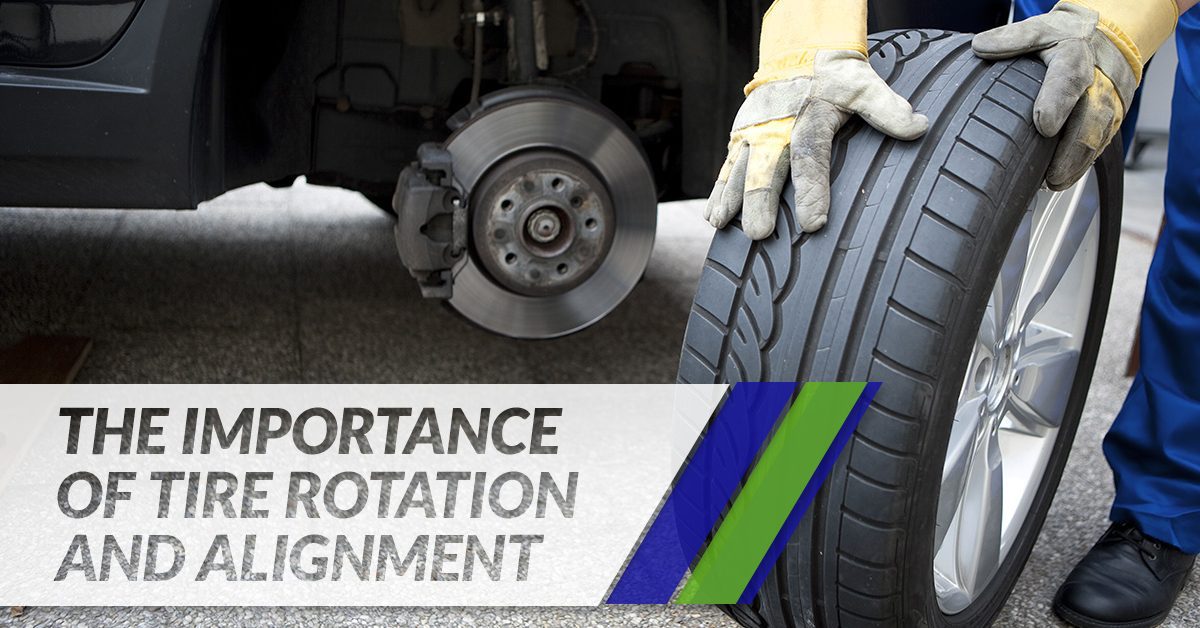Regular vehicle maintenance is a very essential part of car ownership. Most car owners know how important it is to get their oil changed and replace their filters, but what about tire rotation? Tires are among the most important parts of your vehicle simply because they are the only parts that come in contact with the road. Ignoring tire rotation is something you do not want to risk, as it can cause issues for not only your tires, but your vehicle as well.
Routine tire rotation and alignment are not just optional—they’re foundational elements of basic service. These two services help maintain optimal traction, stability, and ensure that all wheels remain in contact with the ground properly during driving, braking, and turning.
The Importance of Tire Rotation vs. Tire Alignment: What’s the Difference?
At Metric Motors, we often recommend tire rotation and tire alignment as essential components of your car’s regular maintenance schedule. But what’s the difference between the two?
Tire rotation involves moving tires from one position on the vehicle to another, usually front to back or diagonally, to promote even tread wear. This process places each tire in a different position, helping them wear evenly over time. Common patterns include moving the front tires to the back and vice versa, ensuring both the rear tires and front tires last longer.
Tire alignment, on the other hand, adjusts the angles of the wheels to manufacturer specifications, ensuring that your vehicle tracks straight and doesn’t pull to one side. A proper wheel alignment ensures that your steering wheel remains centered and your suspension system operates efficiently.
Understanding tire rotation vs. alignment helps drivers make informed decisions about their car’s upkeep and avoid premature tire wear and unsafe driving conditions. Both services complement each other and work together to ensure a smoother ride.
Tread Wears Evenly, Especially on Front Wheel Drive Vehicles
Every vehicle has four wheels. While it may seem like they carry the same weight across them, they actually wear unevenly. The pattern that your tires wear in depends on the configuration of your vehicle as well as the surface you regularly drive on. Vehicles that have front wheel drive and all-wheel drive often prioritize the front axle, shifting most of the weight to the front tires. Oppositely, rear-wheel drive and AWD systems that emphasize the rear axle shift the weight to the rear tires.
Without proper tire rotation, the front tires on a front wheel drive car will degrade much faster than the back tires, compromising control and safety. Routine rotation ensures that all tires wear evenly, which supports the suspension system and helps the wheels maintain grip on various road surfaces.
Improved Efficiency with Proper Tire Balancing
Worn-down tires can cause your vehicle to work harder than usual when speeding up. The tread on your vehicle’s tires is what grips the road and enables your car to gain momentum and speed. Without proper traction or grip, your car places extra stress on the suspension and axle to get going.
Tire balancing is another critical part of this process. It ensures weight is evenly distributed across all wheels, reducing vibrations that can lead to uneven tread and reduced fuel economy. When your tires are properly rotated, balanced, and aligned, your vehicle can maintain pressure on the road without wasting energy, leading to better gas mileage and lower overall maintenance costs.
Saves Money by Extending Tire Life and Protecting Your Drivetrain
Let’s face it—tires can be expensive, especially when all four need to be replaced at once. When you need to replace your tires frequently, it can have a significant impact on your budget. Regular tire rotations help extend the road life of your tires and help prevent wear and tear that often leads to costly repairs.
Skipping rotation can also result in a misaligned or poorly balanced system, which puts unnecessary strain on your suspension components. When your wheels are not properly aligned, it can affect other areas like your axle, transmission, and even your steering wheel, leading to repair costs that could have easily been avoided with regular basic service.
How Wheel Alignment Affects Your Vehicle’s Suspension System
Your suspension system does more than just provide a smooth ride—it keeps your wheels aligned with the road and ensures maximum contact for safe driving. When your vehicle is out of alignment, it can put extra stress on suspension components like control arms, shocks, and struts. This strain can lead to uneven tire wear, increased road noise, and even premature suspension failure.
A wheel alignment ensures that all four wheels point in the correct direction, maintaining factory angles for camber, toe, and caster. These adjustments allow your tires to roll smoothly and keep your vehicle from drifting to one side. Without this alignment, your steering wheel may vibrate or feel off-center, making it harder to control the car—especially at higher speeds.
Routine tire alignment is not just about the tires. It’s a vital part of protecting your suspension system, reducing long-term repair costs, and improving overall handling.
Allows More Control Even with a Spare Tire
Having control when driving is not only important for your safety, but also for any passengers in your vehicle and other drivers on the road. When your tires wear unevenly, you may feel like you do not have as much control over your vehicle as you would with newer tires.
This is particularly noticeable through the steering wheel, where even slight misalignments can lead to drifting or delayed response time. Routine tire rotation and alignment help ensure your wheels stay synchronized, keeping your vehicle predictable—even if you’re driving temporarily on a spare tire.
When Should You Schedule Tire Rotation and Alignment Services?
Understanding when to schedule tire rotation and alignment can make a significant difference in how your vehicle performs and how long your tires last. As a general rule, these two services should be part of every driver’s regular maintenance plan—ideally done at the same time as an oil change or roughly every 6,000 miles.
You should also consider these services if:
- Your steering wheel feels off-center
- Your car pulls to one side
- You feel vibration while driving
- Your tires are wearing unevenly
These are often signs of poor balance, misalignment, or the need for tire rotation. Ignoring them can lead to bigger problems, like blowouts, worn suspension parts, and decreased fuel economy.
By staying proactive with basic service like tire balancing, wheel alignment, and rotation, you’re not just maintaining your tires—you’re preserving the entire driving experience. Don’t wait for your vehicle to show symptoms. Preventive maintenance is always more affordable than emergency repairs.
Improved Safety with Routine Tire Alignment and Rotation
Safety should always be a driver’s main priority. As previously mentioned, uneven wear on your vehicle’s tires often leads to unpredictable driving, which is a big safety hazard. Additionally, uneven wear can cause other major issues such as a blown-out tire. In heavy traffic, this can be a danger to both yourself as well as those around you.
Performing regular tire rotation and alignment not only helps your tires wear evenly but also protects your suspension system and maintains proper contact between the wheels and road surface. Routine wheel alignment also ensures your steering wheel stays centered, which is critical when making quick maneuvers or emergency stops.
Your tires should be rotated between every 3,000 and 7,000 miles that you drive your car for maximum benefit, or every other oil change. When you want your car to perform and handle well on the road without a problem, it is wise to get your tires rotated on a regular schedule. If you are due for a tire rotation, contact the professionals at Metric Motors to schedule an appointment. Our expert mechanics will ensure that your tires are balanced, aligned, and rotated to extend performance and keep you safe.






